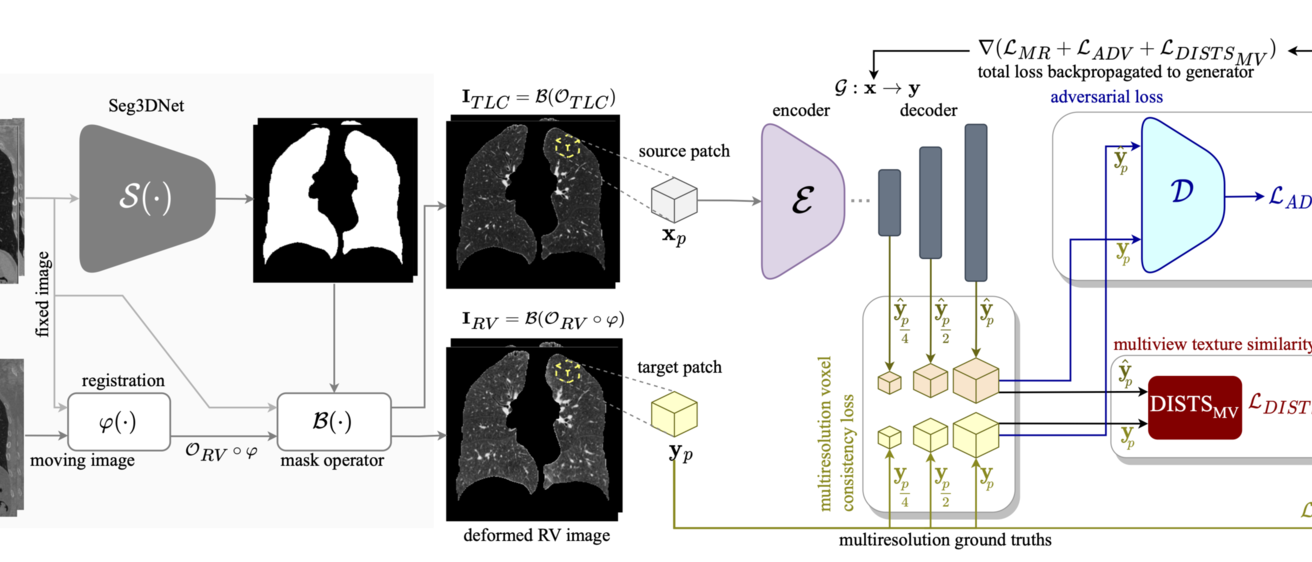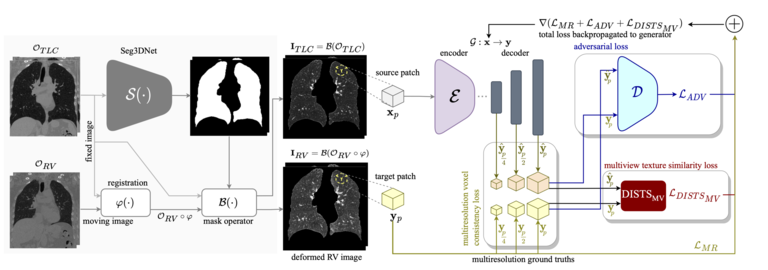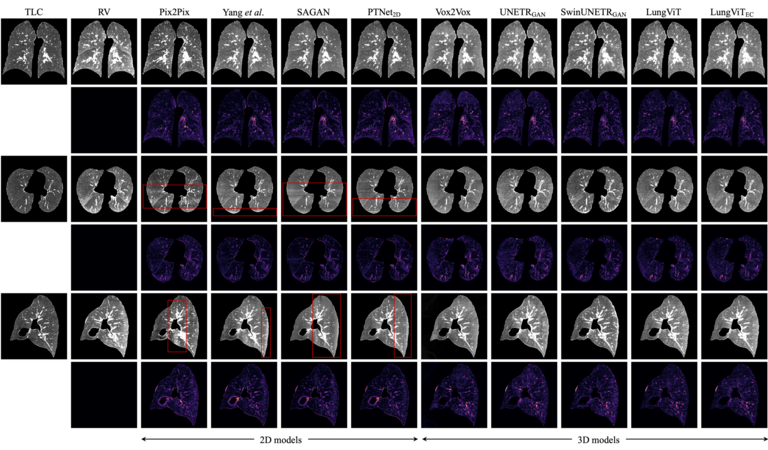Faizyab Chaudhary's manuscript "LungViT: Ensembling Cascade of Texture Sensitive Hierarchical Vision Transformers for Cross-Volume Chest CT Image-to-Image Translation" was accepted for publication in IEEE Transactions on Medical Imaging. This work proposes LungViT – a generative adversarial learning approach using hierarchical vision transformers for translating inspiratory CT intensities to corresponding expiratory CT intensities.
Abstract. Chest computed tomography (CT) at inspiration is often complemented by an expiratory CT to identify peripheral airways disease. Additionally, co-registered inspiratory-expiratory volumes can be used to derive various markers of lung function. Expiratory CT scans, however, may not be acquired due to dose or scan time considerations or may be inadequate due to motion or insufficient exhale; leading to a missed opportunity to evaluate underlying small airways disease. Here, we propose LungViT – a generative adversarial learning approach using hierarchical vision transformers for translating inspiratory CT intensities to corresponding expiratory CT intensities. LungViT addresses several limitations of the traditional generative models including slicewise discontinuities, limited size of generated volumes, and their inability to model texture transfer at volumetric level. We propose a shifted-window hierarchical vision transformer architecture with squeeze-and-excitation decoder blocks for modeling dependencies between features. We also propose a multiview texture similarity distance metric for texture and style transfer in 3D. To incorporate global information into the training process and refine the output of our model, we use ensemble cascading. LungViT is able to generate large 3D volumes of size 320 × 320 × 320. We train and validate our model using a diverse cohort of 1500 subjects with varying disease severity. To assess model generalizability beyond the development set biases, we evaluate our model on an out-of-distribution external validation set of 200 subjects. Clinical validation on internal and external testing sets shows that synthetic volumes could be reliably adopted for deriving clinical endpoints of chronic obstructive pulmonary disease.



